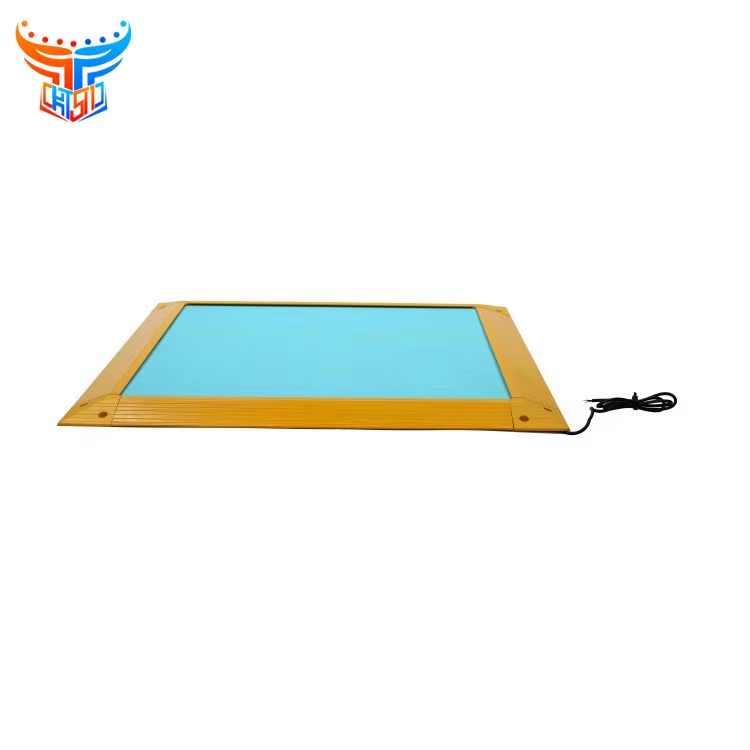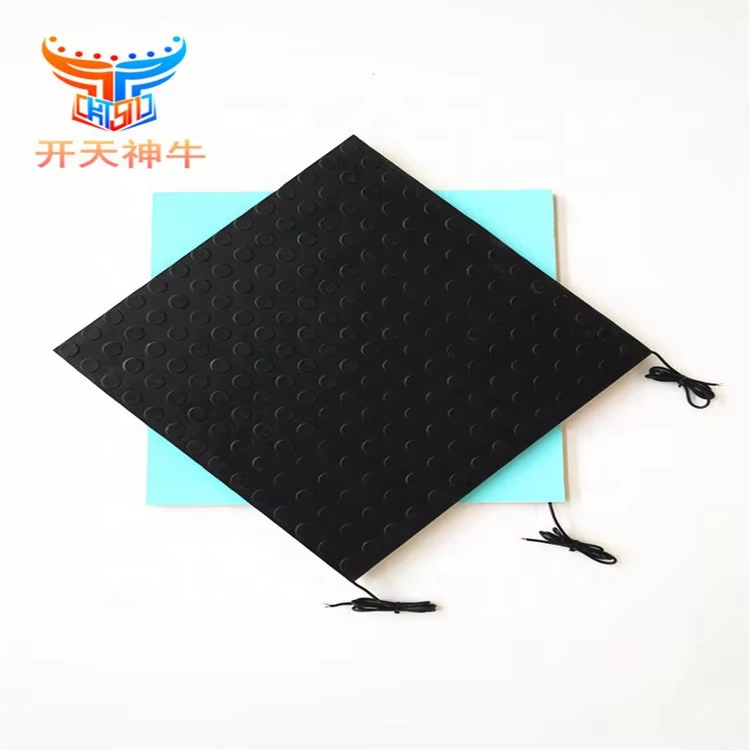Қауіпсіздік матасының қосқыштары мен глобалдық қауіпсіздік стандарттарына сәйкестік
ISO 13856 және Басқа Маңызды Нормативтер
ISO 13856 стандарті безпека және қызметкерлік мемлекеттік операцияларды қамтамасыз реттеу үшін маңызды rol атады. Ол операторларға және машиналарға қатысты осы системалардың қауіпсіз қызмет етуі үшін негізгі талаптарды тізеледі. ISO 13856-ға сәйкес келу тек қауіпсіздік емес – ол компанияларға заңды қорғаным береді де. Мәселен, зерттеулер қауіпсіз қызметтерге сәйкес келуінің ішкі жергіліктерді және жабайлықты қиындастыруына қатысты немесе көбірек шығармашылықты қалай жоюға болады деген нәтижелерді көрсетеді. Содан кейін, жаңа құқықтар 72% -ден астам factory компанияларының ішінде қызметкерлердің қауіпсіздігін стандарттауды талап етеді, бұл да қызметкерлердің қауіпсіздігі осы компаниялар үшін ең маңызды заңды сұрақ болып табылады деп көрсетеді.
ISO 13856-дан басқа маңызды стандарттарға EN 1760-1 және ANSI B11.19 жатады. Мұндай стандарттар конфигурацияны және жұмыс істеу режимін анықтайды қауіпсізлік маты қосмалары сәйкес өнімділік талаптарын көрсету арқылы. EN 1762-1 машиналарда қолданылатын қысымға сезімтал қорғаныс құрылғыларына арналған, осы стандарттың маңызы – болжамай келтірілетін зиянды болдырмау үшін олардың атқаратын рөлімен байланысты. Осы уақытта ANSI B11.19 қауіпсіздікті қамтамасыз ету шараларын қоса алғанда, Американың қауіпсіздік стандарттарына сәйкестікті талап етеді. Бұл стандарттар өндірушілерге халықаралық талаптарға сай келетін сапалы қауіпсіздік маттасын жүйесін жасауға көмектесуі мүмкін.
Кейінгі туралы: ЕУ Машиналар Директивасына Сәйкес Қауіпсізлік Маттік Төртіншілерді Реттеу
Comp.Case - көп танымал автоматтық шешімдерді ұсынушы компания, әзірлеу қорғау мат жүйелерін ЕАҚ Санақтар Меканикалық Директивасымен біріктіріп, praktikalyq ортада логиканы көрсетті. Компания алдын ала көптеген қиындықтарға кездесті, көп қате құрылғыларын қайта конфигурациялау және қатынастардың қатынастық стандарттарын өту үшін интенсивті тесттеу циклдерін өткізді. «Біз үлкен дизайн программаларына сауда етіп, интенсивті тесттеу циклдерін өткіздікten кейін осы қиындықтарды өзіміз шешуге мүмкіндік табық».
Жақсы нәтижелер шықты — қауіпсізлік табыслары 30% артты және үзіліс уақыты 20% кемісті. Бұл нәтижелер ЕАС директиваларымен біріктірудің плюслерін беткіндейді, еңбек істегішілердің қауіпсізлігін жоғарылатында да, операторлардың қызметтерінен өте өзгеше арттырудың да. ЕАС рынегіне қосуға деген қызметкерлер үшін осы директиваларға сай болу, рынектегі мүмкіндіктерге қол жеткізу үшін тиімділік береді. Осы құралдарды қолдану Еуропа сыйлықтары мен клиенттеріне қатысты еуке және қаншылықты да арттыра алады.
Сертifiktaцияға қол жету үшін адымдар
Тауықтың қорғаныс мат жүйелерін сертификаттау әдістемелік процестің бір қатары. Бұл, алдын ала дизайн талдауларымен басталады, сонымен қатар кодтың сыйфатына сай болмау мeseлелерін ашып көрсетеді. Жүйелердің маңызды қасиеттері олар компанияларда қолданылудан бұрын барлық қорғаныс стандарттарына сай болатындай тез-тез тексерілмейді. Осынан кейін, әдетте, үшінші тараптан сертификатталған лабораториялар тауықтың қорғаныс мат жүйелерін дамыту стандарттарына сәйкес тексереді. Лабораториялар компанияларға берілетін рұқсат ескерткісін алудың шарттары ретінде тексеру процедураларын және талаптарын барынша қамтамасыз етеді.
Барлығын жазбаларға алу да маңызды. Осы аудит жолы аудиттерді қысқартады және магазиндерге қайта қарау мүмкіндігін минималға азайтады. Ол сыйфатқа сай болу жазбалары ретінде қызмет етеді және келесі тексерулер үшін қажетті. Толық сертификаттау процесін қамтамасыз етіп, біз тауықтың қорғаныс мат жүйелерінің неғұрлым құрылғыларда қолданылатынын, бірақ қызметкерлер мен машиналардың қорғанысын қорғау үшін ең жақсы тәсілдерді пайдаланатынын қамтамасыз етуге болады.
Автоматтық орталықтарда қадамдық қауіптік тауып келу
Қарым-қатынас жою системасымен интеграция
Тауықтың қорғаныс мат басқармалары мен жағдайлы төртіншілік системаларының біріктіруі, автоматтық системалардағы толық қорғаныс концепциясы үшін маңызды негіз болып табылады. Бұл байланыс маттан басылған кезде apparatты жылжымайтын операцияларды шынайы тез аяқтауға мүмкіндік береді және іске қосатын қызметкерлерге зиян келуге мүмкіндігі бар екенінде операцияларды тез қысқартады. Қорғаныс системаларын пайдаланатын санайы секторлары 30%-ға дейін жергілік инциденттерді кемиді деп Междуаралық жұмыс орны қорғанысы мен эргономика журналында айтылады. Орналасуына қарағанда, бұл қорғаныс маттарын системаның басқару панелімен байланыстыруын аңылатын, сонымен қатар, сенсорлардың жағдайлы процедураға тікелей хабарлауы мүмкін. Системаның барлық сегменттеріне ашулық коммуникациялар қорғаныстың жалпы деңгейінің тұрақты дамуын қамтамасыз етеді.
Өнімдеу іс-әрекетінде сыйып қалу қаныштарын алдын ала қалайту
Құрғалық саулық қорғаушы мәтін ауыстырушының пайдалануы арқылы құрғалық травмаларын кеміту мүмкін. Салықтар секторының хабарларына сәйкес, қорғаушы мәтіндерді пайдалану травмалардың бұндай түрлерінде 40%-ға дейін кемітуге келеді. Құрғалық травмалары тегін қоршылық шарттары бар үлкен машиналармен жақында істейтін операторларда кездеседі. Қорғаушы мәтіндер - егер кісі анықталса, машиналарды тоқтату мақсатында жасалған, жоғары деңгейде сенситивті қорғаушы құрылғылар. Берілген нәтижелердің мысалдары - әуелдік агрегатты құру фабриkasында, онда қорғаушы мәтіндерді енгізу соңында травма орташа дастан 50%-ға дейін кеміді. Бұл мысал, сауаттылықты мақсат ретінде емес, алдын ала әрекет етсеңіз, соңғы ескерту ретінде қарастыруға болады.
Көлік көп жүретін аудандардағы беріктік талаптары
Көп ағылшын жерлерде қауіпсізлік көрсеткіші табаны әдетте көптеген салынуды ұстап өтуі керек. Бұл стандарт табандардың күн сайынғы қадамдар потоціясына қарсы қарызды ұстауы мен мақсатын қызмет етуіне мүмкіндік береді. Инновациялық дизайн, мисалы, санайлы деңгейдегі шина және басқарылған кеңістіктер қосымша қауіпсіз болуға көмектеседі. Зерттеулер сипаттайды, складша орталықтары қорқын-жағдайлардан және материалдардың жаманымен жеткізілетін істерге қарсы қарызды ұстауға болмаған. XYZ Safety Corp бизнесінде қауіпсізлікке қатысты тесттерге және ұзақ өмірлену қабілетіне ие болуға деген репутациясы бар. Бұл бизнесдер барлық табандарымыздың өлшеулерінен әлі ең биік деңгейде ұстауға дайын, соның ішінде осы қысқаша, лекін дәлелденген табан, әдетте конкуренттік бағада.
Травмасız жұмыс орнындағы ғана көрсеткіштер
Операторлардың әрекеттеріне психологиялық тәсір
Психологиялық тәпкірдің өзгерісіне қарсы көрсеткіштерді білу және оларға сәйкес әрекет ету, бұл қаншалықты қауіпсіз қоршағын қалпына келтіру мақсатында қажетті. Мат басқармалары сияқты қорғау мерлері операторлардың қауіпсіздікке дайын болуын өзгертеді және олардың зорбалауы мен мәжбүрлік сезімдерін арттырады. Тtéбірлер біріктікке жеткенде қауіпсіздікке қараған қауіпсіздік сезімінің кемуін көрсетеді. Сәтті әрекеттердің өзгерісін беретін бағдарламаларының мысалдары көрсетеді, психологиялық қауіпсіздікті өлшеуге дейінгі практикалық қауіпсіздік әдістерімен біріктірілген жағдайда ташкилаттық ғабуыштар артады. ...Техникалық қауіпсіздік системалары, қауіпсіздік тренингілерінің, тексерілетін қауіпсіздік практикасынан алынған, операторларға қауіпсіздікке дайын болуға көмектесетін психологиялық құралдар береді және оларға қауіпсіздікке қараған қауіпсіздік сезімін береді.
Қауіпсіздік маттарын қолдану үшін тренинг протоколдері
Тезінше жер қорғау системалары олардың жұмыс орнында сәтті жұмыс істеген болу үшін жақсы білім беру протоколдарына ие болуы керек. Бұндай процедуралар операторлар мен техникалық шынымен қатысты қажетті біліктерді өзгертуге бағытталады, бұл еңбек жасау және растауға жетуге көмектеседі. Табыс тіркелген тапсырмалар қайта-қайта дәлелдейді, білім беру мәселелерін жетілдіру арқылы растаудың жақсы нәтижелерін көрсетеді және жұмыс орнындағы инциденттерді кемітеді. Көптеген тезінше жер қорғау системалары бар; бірақ компаниялар бірнеше білім беру ресурстарын және бастамаларын қолдануы мүмкін, оларды бірнеше тезінше жер қорғау системаларына сайлауға болады. Мисалы, интерактивті білім беру семинарлары немесе симуляцияға негізделген білім беру - персоналға тезінше жер қорғау операцияларымен таныстыру үшін тиімді тәсілдер. Персонал системаларды пайдалануға және ұзақ уақытпен жұмыс істейтін болуға үйретіледі.
Аварияларды өшіруге қатысты ұзақ мезгілді қаржылық пайдасы
Тауық өрnek технологиясы - узак жолда ғана артық салықтарды кемітуге, бірақ тәс-тәс қателер мен олардың нәтижелерін қорғауға мүмкіндік беретін инвестиция. Мүмкін шамадағы қаржылық тәсірі қателер санын кемітсе, сауда құнындағы салықтар, заңdar заттар мен жұмыс орындарындағы қателерге себеп болатын өзгешілдіктерден кейін жоғалған производительность сақталады. Бұл жағдайларды статистикамен дәлелдейді, мәліметтер сауда компанияларының қауіпсіздік технологиясына инвестиция жасаған кезде, олар қателерге қатысты қаржылық траттарды өзгертеді және соңында пайдаланады. Кейбір кездесулер ROI-да (инвестицияға қайта отын) жақсы нәтиже береді және корпорациялық траттар ұзақ жолда қаржылық жолда ұстап жатады. Сондықтан ROI тек қаржылық емес. Ол, жұмыс орындарының қауіпсіздігін жақсарту арқылы қызметкерлердің рухани мәдениетін және кеңесшілік іміжін арттыруға мүмкіндік береді, бұл сіздің бизнесіңізге үлкен пайда.
Жаһандық марапатта қорғаныс мат технологиясының іске асырылуындағы мәселелер
Традиционалық санаттардағы қарсылауға жетістік
Қырғыз-қалай, технологияға қабілетті емес санаттарды қауіпсізлік мата технологиясындағы жаңа шешімдерге алу күшкіліктің басқа несие тапсырмашы болуы мүмкін (мысалы: осындағы тонна консервіне қараңыз. Бұлар берілгенде, традициялық әдістермен жұмыс істейтін көптеген санаттар қауіпсізлік инновацияларына қарама-қарсы көруі мүмкін. Мысалы: өнеркәсібі және құрылыс салаларындағы алғаш реттеу көрсеткіштері текнолодгиялық секторлардан астырақ. Бұл саударлардың дамытуы қажет, мысалы, жоғары деңгейлі қауіпсізлік қасиеттері мен мүмкін нәтижелер туралы маңызды аргументтер болуы мүмкін. Көше артықшылардан келген тез-тең тәжірибелер, қауіпсізлік рекордтарын жақсартуға, зерттеулерді жақсырақ жасауға және эффективділікті арттыруға көмектеседі.
Қорытынды жобалау және қате тіркелу туралы сұрақтарды шешу
Компания сақтандыру үстінде өзгерту жүйелеріне қарағанда, кеңес беру мен қате шығару мәселелерімен кездеседі. Дұрыс емес қосу немесе сақтау нәтижесінде осы өлшемдер қате шығаруы мүмкін және бұл негізгі уақытты токтатуға өтеді. Ерекше деректер сипаттайды: жүйенің бас заңдалуының көбі мат қызметінің технологиясында дефект болмаған жағдайда, қате арнайы әдістерге себеп болады. Тиімді тексерулерді және регулярлық сақтауды орындау осы мәселелерді кемітуге көмектеседі. Сонымен қатар, жоғары технологиялық сенсорлық жүйелер және қуатты программалық шешімдер тәк)new технологиялардың қателерін азайтуға және табиғатты дамытуға көмектеседі.
Тиімділік пен қоры жинау арасында теңсіздік
Бізнес қауіпсіздік мат жүйелерін қосуға сенімділік берумен байланысты қаржылық тапсырмалар мен күтілетін инвестицияға қайтарым (ROI) арасындағы шеккейтудің мәселесін шешу керек. Алдын ала қауіпсіздік технологиясының құны үлкен болуы мүмкін, бірақ жағдайлардан қорғану арқылы сақталатын пулдық өнімдер көбірек. Місалы, жергіліктегі инциденттерді кеміту қауіпсіздік премияларын, адвокат қызметтерінің құнын және жұмыс уақытының істемеуін көбірек кемітеді. Кост-бенефит анализі сияқты қаржылық және пайдалықтарды аналізде құрылған моделдер қауіпсіздік құралдарын ұсынуда ресурстарды әдеттеңші таратуға көмектесуге болады. ROI алдын алағы құнын және ұзақ мерзімді пулдық пайдаларды салыстыру арқылы компаниялар қауіпсіздік технологиясына қаржылық тапсырмаларын дәлелдеуге болады.

Болашақ үрдістер Қауіпсізлік мат атқаушысы Инновация
ИOT қосымшасы бар Сmart Маттар
Интернеттік құрылғылармен (IoT) жобаланған, зерттеу кезінде қауіпсізлікке негізделген саптар үйренетін мониторинг және табиғаттық қауіпсізлік арқылы жұмыс орны қауіпсізлігін өзгертуде. Бұл жетістік саптар деректерді толық шығару және талдауға мүмкіндік береді, бизнесге қауіпсізлік басқару системелерін жылдам өңдеу мүмкіндігін береді. Мисалы, IoT-қосымшалы қауіпсізлік саптары қозғалыс паттерндерін мониторингдеу және мүмкін дамуын анықтауға мүмкіндік береді, статикалық қауіпсізлік технологиясынан кейінге қадам қатынасы.
Кейбір индустриялық салалардағы компаниялардың іске асыруындағы қауіпсіз саптардың революциялық әсерін сипаттайтын кейінгілердің қысқаша түсіндірмелері де көрсетілген. Индустриялық орталықтарда IoT-қосымшалы қауіпсізлік саптарына ауыстырылған компаниялар еңбек орны инциденттерінің кемуі мен өндірістік еңбек жоғары деңгейге келуін көрді. Бұл фирмалар қауіпсіз протоколдары бойынша реаль уақытта хабарландыру және деректерге негізделген сұрау мүмкіндігін алды. Нәтижесінде, қауіпсізлік критикалық системелерге IoT технологиясын қосу қауіпсізлік қажеттіліктерін арттырады және бизнес өндірістігі мен риск басқаруында жалпы қауіпсізлікке мүмкіндік береді.
Адаптивті басылу әсері қасиеттері
Тезірлікке сай кеңес беретін қауіпсізлік жерлері: дүниедегі алғаш рет, бұл қауіпсізлік жерлері әртүрлі жылдамдық пен басынша факторларына қарағанда динамикалық тағамдар береді. Бұл функция қауіпсізлік системаларын ашық жұмыс орнына сәйкестендіруге мүмкіндік береді және сондай-ақ өзгертуді қамтамасыз етеді. Бұл интуитивті қасиеттер сенсорлық технологиялармен жасалған, ол жерлерде адамдық іс-шаралары мен басқа қозғалыстарыңыздан басқа қозғалыстарды ажыратуға мүмкіндік береді.
Автоматикаға қатысты секторлар, мысалы, авто және тяжелая санайысы салалары осы жаңалықтардан өте пайдалануға болады. Тезірлікке сай өзгерту үшін басыншаға сай сенсорлық табан адамзаттың мүмкін бойынша шектеулеріне қарағанда шынайы уақытта қайта қосуға мүмкіндік береді. Осы атау бойынша осы қасиеттер алдыңғы қауіпсізлік модулдерінен кейінге қарағанда тезірлік пен қауіпсізлікке қарағанда қажетті өзгерістердің маңызды қадамын тастайды.
4.0 Санатындағы Рөл
Технологиялардың біріктіруі нәтижесінде қауіпсізлік матың өшірістері 4.0-шы санат кезінде әсер жасау үшін дайын. Осы уақытта фабрикалардың автоматтық болу деңгейі арттырылып жатқанда, мысалы, маңызды қауіпсізлік құралдарының, мата өшірісі сияқты, қолданбалары инциденттерді өшіру және ортақ жұмыс процесін қауіпсіз ету үшін тиімділігі дәлелденген. Секторлік деректер білдіреді: зерттеу фабрикалары мен интегралды қауіпсізлік технологиялары орналасқан жағдайда, істеме қатысты несептердің шығу деңгейі қазіргі уақытта өзгеше азайтын болады.
Іші 4.0-дағы қауіпсізлік технологиясының артықшылықтары, автоматика және реальдік уақыттағы қауіпсізлік аналитикасымен бірге табиғаттың жақсы болуын көрсетеді. Сонымен қатар, осылайшаған шешімдер ұзақбаптағы, пайдалы қауіпсізлік технологияларының дамуына ықпал етуі мүмкін, олар қауіпсізлік мeseлелеріне тек қарсы әрекет алмайды, бірақ оларды табыс алатын, сондай-ақ жұмыс орнындағы қауіпсізлік стандартын қайта анықтауға да ықпал етеді.” Іші 4.0-дағы даму әртүрлі болғанда, зерттеулердің әлі де артады, сондықтан соңғы кезде, қазіргі сабақтағы салаларда қауіпсізлік шешімдері маңызды рөл атқаруда.
Жиі қойылатын сұрақтар
ISO 13856-ның қауіпсіздік мәтіндері жүйесіне қалай маңызды?
ISO 13856 операторлар мен техника қорғаушы жүйелерін жұмыс істейтін тезгілерді қамтамасыз ететін негізгі көрсеткіштерді береді, бірдағы компанияларға құқықтық заңгерліктерді де ұсынады.
Қауіпсіздік мәтіндерінің шеккенге қосымша жүйелері қалай интегралданады?
Қауіпсіздік мәтіндерінің шеккенге қосымшалары жүйенің басқару панеліне байланыстырылады, олар активация болғанда операцияларды шынайы тезде тоқтатады, қауіпсіз жағдайға сапарлауға көмектеседі.
ЕУ Техникалық Директиваларымен сәйкесшеу қауіпсіздік мәтіндері жүйесіне қандай пайдер келтіреді?
ЕУ директиваларына сәйкесшеу ақылық жұмыс орны қауіпсізлегін және производительность-ты арттырады, сонымен қатар Еуропадағы пазарға шығу үшін конкуренттік пайдер мен мүмкіндіктер ұсынады.
Өзгертуіші басылу әсері қандай маңызды?
Өзгертуіші басылу әсері қауіпсіздік мәтіндеріне жұмыс орны қорытындыларына сай динамикалық жауаптар ұсынуды мүмкін етеді, жүйенің әмбебаптылығын және пайдаланушы қауіпсізлегін арттырады.
Мазмұны
- Қауіпсіздік матасының қосқыштары мен глобалдық қауіпсіздік стандарттарына сәйкестік
- Автоматтық орталықтарда қадамдық қауіптік тауып келу
- Травмасız жұмыс орнындағы ғана көрсеткіштер
- Жаһандық марапатта қорғаныс мат технологиясының іске асырылуындағы мәселелер
- Болашақ үрдістер Қауіпсізлік мат атқаушысы Инновация
- Жиі қойылатын сұрақтар

